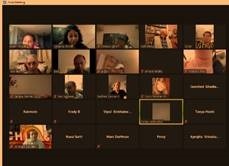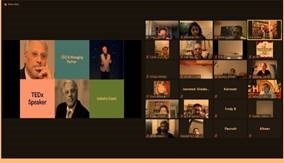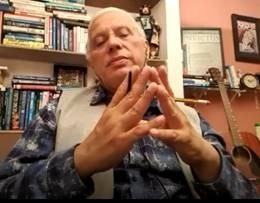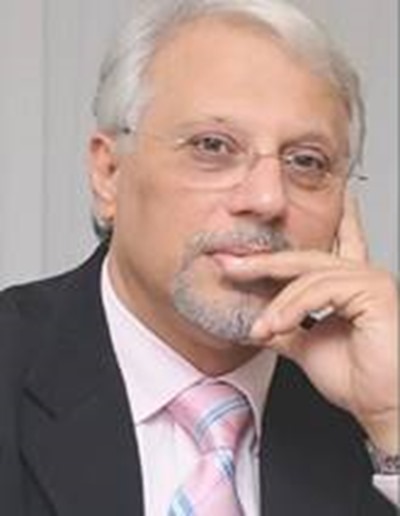The WZCC Toronto Chapter held a very thought provoking webinar on Saturday, June 13th, 2020. Led by Chapter Chair, Cyrus Patel & Secretary, Arashasp Shroff, the topic of discussion was ‘Leadership in Times Adversity by Dr. Adil Malia, a thought leader in the different dimensions of corporate transformation, people, and leadership.
The webinar was started with a brief and direct question by Dr. Malia…What is adversity and what happens when it strikes?
Adversity can be defined as ‘black swan’ events…these are events that;
1) Take the entire world by surprise — It lies outside the realm of regular expectations, due to the fact, that nothing in the past can convincingly point the possibility of it happening.
2) Destroys the prevailing science & carries extreme consequences.
3) Despite taking the world by surprise, people understand how it logically happened, but couldn’t predict the event, prior to it happening.
The examples given by Dr. Malia included, the financial crash of 2008, the demonetization in India, the disappearance of the USSR, and the 9/11 attacks.

What happens when adversity strikes?
When adversity strikes, it disturbs the alignment between the economic opportunity, compatibilities of the organization, and the vision and plans for the future of the organization. As a result, we as leaders must navigate through this turbulent times, following the 4 Zones of Organization.
1) Twilight Zone of Obscurity
In the most immediate period after whivh adversity strikes, employees don’t know what is happening, and emotions are startled and no history exists for the current chaos. Dr. Malia gave examples like, the Dark Ages, post the collapse of the Roman Empire, which were leaderless and rudderless, and lasted 300 years. At this stage, certain authoritative and directive style of leaders are being called for. However, while the top-down decision making process benefits organizations in streamlining the execution process, as leaders have to be very sensitive, not only to the business challenges, but also sensitive to challenges and fears of their employees.

How do we reintroduce people back into the system? Leaders will have to create a systematic program on re-introducing people and maintaining a structured communication. Due to the sense of familiarity being disturbed in the earlier zone, upon returning, employees must feel a sense of familiarity, which is accomplished through structured communication. Systematic re-introducing can be also accomplished by re-training for their new onboarding. One way to redesign the onboarding process is to create a sort social experience, where leaders create a centralized platform design for social connection and peer networking. Throughout the entire process, the purpose of leadership must be to reenergize, refamiliarize, and set the pace for the returning employees & large social activities, whilst maintaining safe physical distancing.

3) Zone of Designing and Recalibration:
Here as leaders in business, it is imperative that we now shift and adapt to the new situation at hand. Proactively seeking opportunities from the new situation ahead, whether that may be adopting technological improvements or revisiting how you previously ran the operation. Each operational goal will also need to be redefined. In the moment, the leadership style that thrives the most is ‘Affiliative Coaching’, in the sense that leadership traits are portrayed through promoting harmony and conflict resolution among teams. Simply, ‘Affiliative Coaching’ strives to create an emotional bond and a feeling of a mutual connection within the team. It also puts people at the heart of business success & alleviates the pressure of performance and creates a sense of belonging.
4) Zone of Commitment, Dedication and Reconstruction.

Once you have implemented your ‘Affiliative Coaching’, the key is to build strategic connections with people. Strategic connections can be created primarily two ways. Linking the big picture with the little picture for employees and leadership and translating this strategy into daily meaning for employees. In instances, of the brick layer, where he was told to lay bricks, he looks at it as a job & wage earning opportunity and completes the work. But when he is told, you are a meaningful contributor to the building of a chapel, naturally his engagement and involvement becomes part of a strategic purpose and he works towards that. As a result, employees that have been communicated the direction in which the organization is heading and how their own personal role can help the organization reach their goal, have been more inclined to play a larger role in the paradigm shift.

However, the most important role as a leader, Dr Malia says, is to move people from a state of hopelessness to a state of resiliency. He goes on to say, hopelessness will stop employees from moving towards the right direction. It is critical as leaders, we communicate to staff the value of resiliency, as it will enable them to develop mechanisms to defend against overwhelming experiences & maintain physical and mental balance in our lives
Dr. Malia concluded the session with a lengthy Q&A from over 50 participants, followed by a thank you message from the Chapter Chair.
You can watch the entire video recording below.
The WZCC Toronto, will be hosting their next online webinar on June 27th , 2020 at 12pm EST, 9:00am PST, 9:30pm IST. The topic of this webinar will be ‘How to Build an Online Business’, conducted by Producer & Co-Founder of Dhanksak, the online Zoroastrian Apparel brand, Tanya Hoshi.

